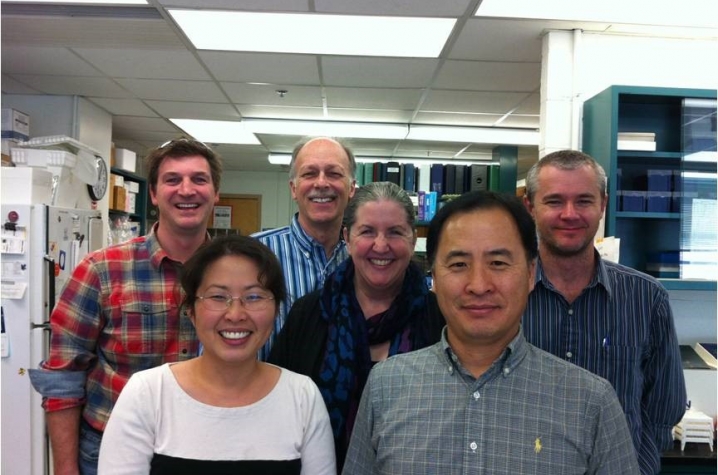UK Researcher Leads Global Team of Scientists Exploring the Processes that Propel Ovulation
LEXINGTON, Ky. (Nov. 10, 2014) — During a woman's menstrual cycle, ovulation is the critical mid-point when an egg is released and fertilization can occur. Women's health providers have long understood that a woman's best chances of becoming pregnant are around the time of ovulation. But researchers are still learning about the physiological triggers that initiate this natural process in humans and other mammals.
Researchers at the University of Kentucky are leading a project that recently received $6 million in funding from the National Institutes of Health (NIH) to explore the ovulatory process, or the series of physiological events that result in the release of an egg from the ovaries. A global team of researchers anticipate that applications from their research will help contrive targeted treatments for infertility and potentially develop non-steroidal female contraceptives. Most female contraceptives on the market today contain steroids, which can cause unwanted side effects in some women.
Thomas Curry, Ph.D, a reproductive endocrinologist in the Department of Obstetrics and Gynecology at UK HealthCare and principal investigator of the project, said the NIH funding supports four integrated studies that are simultaneously taking place at institutions in the United States and abroad.
The project involves a multidisciplinary group of scientists representing the University of Kentucky, the University of Illinois College of Veterinary Medicine Urbana-Champaign, Eastern Virginia Medical School and the University of Goteburg in Sweden. The individual studies are focused on specific mechanisms in the ovulatory process, which is prompted in the woman's body by the release of the luteinizing hormone, or LH. Projects examine changes that occur in the blood supply, the immune system, steroid production and the extracellular matrix as the ovarian follicle travels through the ovulatory process.
Through their individual studies, researchers will contribute complementary data that will be amalgamated for a comprehensive understanding of the ovulatory process. The multi-site project encourages collaboration among researchers and provides a platform for exploring multiple scientific questions at one time.
Through the project, researchers will record for the first time physiological changes in pathways that are critical for the ovulatory phase and early luteal phase, or the point at which pregnancy can occur immediately after ovulation, to take place. One unique aspect of the project is the team of researchers will examine the ovulatory events in human follicles, which are responsible for developing and releasing the egg. Human follicles are supplied by Dr. Mats Brannstrom, a Swedish obstetrician-gynecologist who has recently performed the world's first uterine transplants, which have resulted in the birth of healthy live babies.
Using observations from the studies of the human follicles, researchers will use monkey and rodent tissues as models of comparison to ovulatory events that occur in humans. The use of rodent and monkey models will allow researchers to translate the results from their studies to recapitulate observations examined in human tissue. The researchers will compare evidence from studies of the human, monkey, and rodent tissues to further understand the fundamental ovulatory process across species.
"What is unique about our studies is the possibility to, for the first time, examine the process of ovulation in the human and then be able to take these observations and use animal models to investigate how the process actually occurs," Curry said. "Many scientists at different sites around the world are conducting interwoven studies to better understand this process."
Co-investigators on the study include Misung Jo in the Department of Obstetrics and Gynecology from the University of Kentucky, Philip Bridges in the UK Department of Animal and Food Sciences, CheMyong Ko in the College of Veterinary Medicine at the University of Illinois Urbana-Champaign, Diane Duffy from the Department of Physiological Sciences at Eastern Virginia Medical School, Mats Brannstrom from the Department of Obstetrics and Gynecology at the University of Goteburg, and Oliver Oakley from the Department of Biological Sciences at Eastern Kentucky University.
MEDIA CONTACT: Elizabeth Adams, elizabethadams@uky.edu






